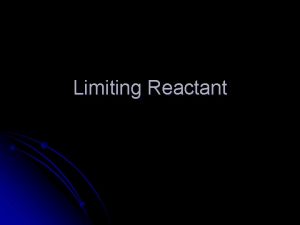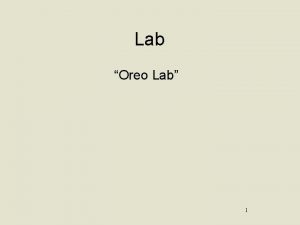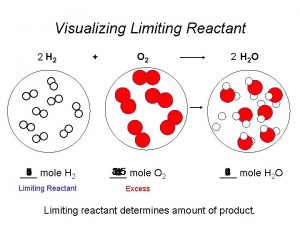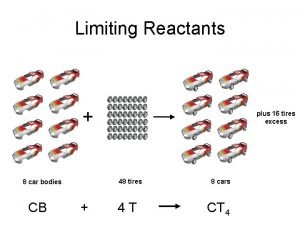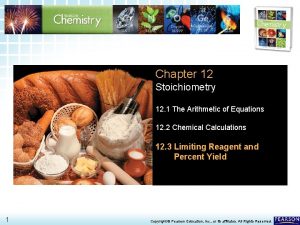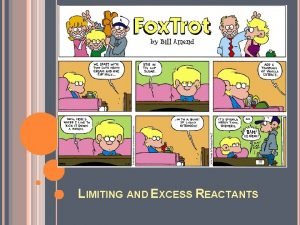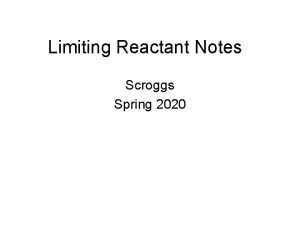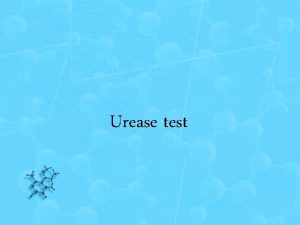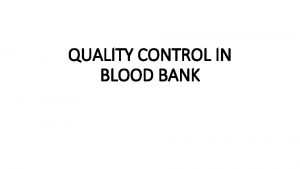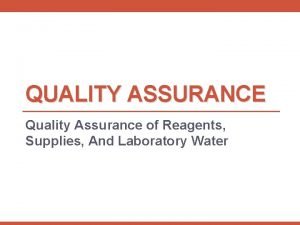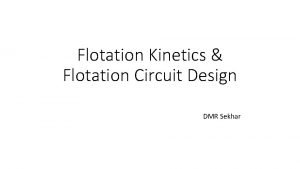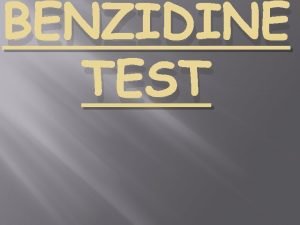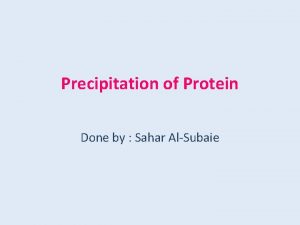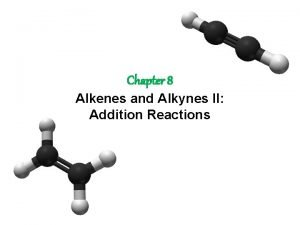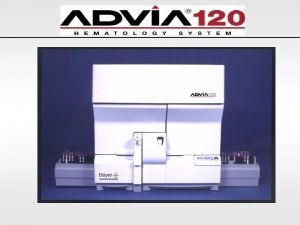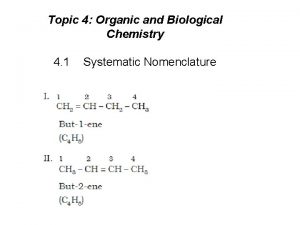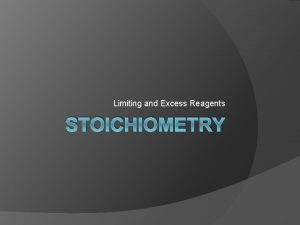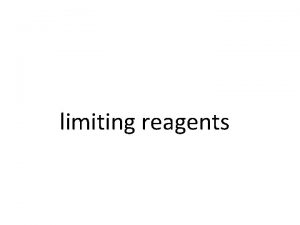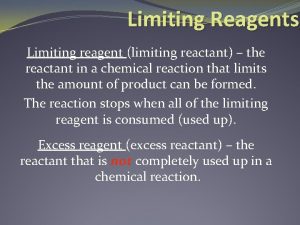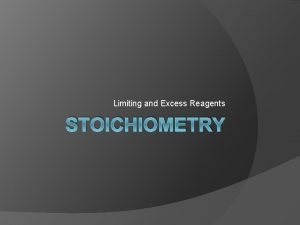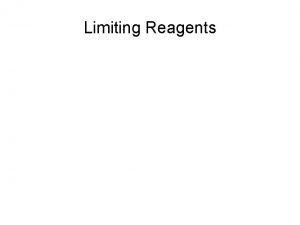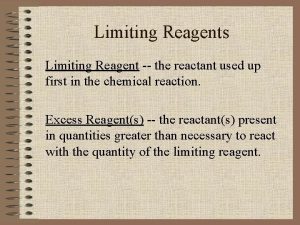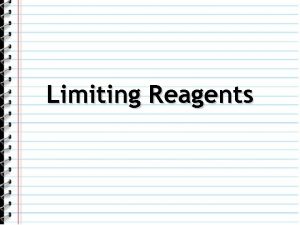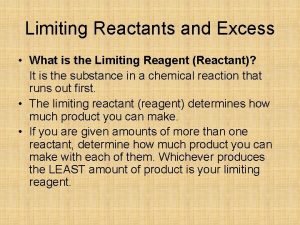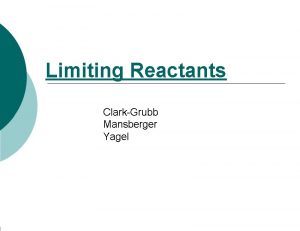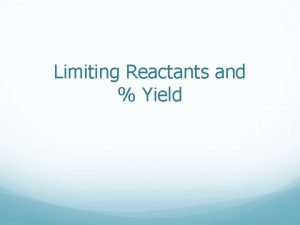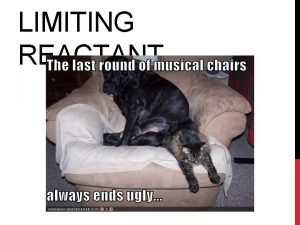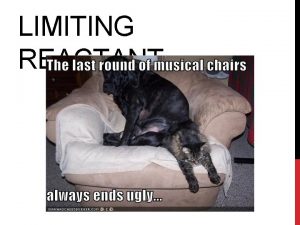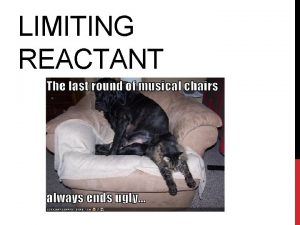Limiting and Excess Reagents Qualitative Analysis Concerned with















- Slides: 15

Limiting and Excess Reagents


Qualitative Analysis � Concerned with identifying the identity of a substance � Or whether a specific substance is present � i. e. flame test, litmus tests

Quantitative Analysis � Determining the quantity (mass or concentration) of a specific substance present in a sample. � i. e. titrations, precipitation mass

Law of Conservation of Mass �Mass cannot be created or destroyed, it is merely rearranged in space, and changed into different types of particles.

� Quantitative analysis can be used to verify the law of conservation of mass

Limiting Reagents

Limiting Reagent � Sometimes 1 of the 2 reactants is not completely used up in a chemical reaction… �That’s the LIMITING reagent!

STEPS TO SOLVING LIMITING REAGENT PROBLEMS: 1. 2. 3. 4. 5. Write a Balanced Equation for the Reaction Determine the 2 Reagents involved in the Reaction Using your 2 givens, Separately solve for your unknown The species that gives the smaller amount of your unknown is your Limiting Reagent Use your Limiting Reagent to Figure out how much of your Excess Reagent will Actually React


Example 1: � If 20. 0 m. L of 3. 0 mol/L H 2 SO 4(aq) is added to 15 m. L of 5. 0 mol/L KOH(aq), what mass of water can form?

Example 2: � 350 g of KOH(s) is added to 1. 00 L of 6. 0 mol/L of H 3 PO 4(aq). How many moles of which reagent is in excess?

Example 3: � 10. 0 L of nitrogen gas at 105 k. Pa and 35 C are mixed with 33. 5 L of hydrogen gas at 95. 0 k. Pa and 40 C and ammonia gas is formed. What mass of ammonia gas will form?

Example 4 � 5. 00 g of Na. OH(s) is added to 50. 0 m. L of 1. 25 mol/L HNO 3(aq). Calculate the mass of water that forms. Determine your Limiting and Excess Reagents. Finally, use your LR to determine how much excess reagent is present.

 Determine limiting reactant
Determine limiting reactant Oreo lab answer key
Oreo lab answer key Limiting reagent examples
Limiting reagent examples Limiting and excess reactants race car answers
Limiting and excess reactants race car answers Limiting reagent and excess reagent
Limiting reagent and excess reagent Percent excess reactant formula
Percent excess reactant formula Limiting reactant
Limiting reactant Urease test reagents
Urease test reagents Blood bank quality control
Blood bank quality control High-quality reagents
High-quality reagents Kinetics flotation chemicals
Kinetics flotation chemicals Benzidene test
Benzidene test Alkaloidal reagents denature proteins
Alkaloidal reagents denature proteins Ozonolysis of alkenes mechanism
Ozonolysis of alkenes mechanism Calculating mcv
Calculating mcv The polar group
The polar group
